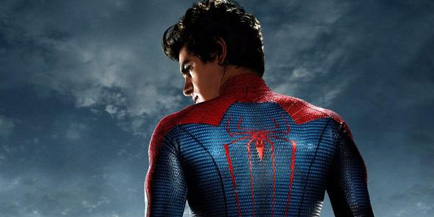The Franchise that Couldn't: Looking Back on the Amazing Spider-Man
By Felix Quinonez Jr.
January 16, 2017
This left the studio in the not-so-enviable position of having to win back fans and rebuild excitement towards the franchise. It's very similar to the situation the Batman series was in after its own franchise-ending debacle, Batman and Robin. That movie was even more reviled than Spider-Man 3. It also ground the series to a screeching halt and led to a reboot of its own.
However, there was one very key difference between the Batman and Spider-Man situations that played a very significant role in how the reboots were handled and eventually received by fans. Although fans loathed both Batman and Robin and Spider-Man 3, their box office performances were dramatically different. Batman and Robin grossed $107 million domestically and $238 million worldwide. That sounds like a lot of money until you factor in the costs. The movie cost $125 million to make, and when you add in the money spent on advertisement, it becomes clear that it was, to put I kindly, not a financial success. This turned out to be a blessing for Christopher Nolan, who handled the rebooting of the Batman series. The fact that Batman and Robin failed on just about every level granted Nolan a lot of creative freedom. He was basically allowed to burn the whole thing to the ground and head in his own direction. And as we all know, that worked out very well.
On the other hand, despite being almost universally despised, Spide- Man 3 was still huge at the box office. With almost $900 million worldwide, it was actually the biggest overall earner for the series. This wound up being a double-edged sword. Because it was still a huge financial success, the studio didn't want to stray too far from what Raimi had already done. Although playing it safe might have seemed like the smart choice at the time, it actually hurt them in the long run. Because Marc Webb was essentially working with one hand tied behind his back, he never really got a chance to bring his own vision to the screen.
When advertising The Amazing Spider-Man, Sony had to find a way to lure skeptical audiences to another Spider-Man origin story. Because of this, the early promotional material really played up the “untold story” element of the movie. But that quickly disappeared from the marketing and was never mentioned again. It has been said many times that the movie required a lot of reshoots before hitting the screen. And the fact that a lot of footage appears in commercials that is never seen in the final product seems to support those rumors. And maybe some of the “untold” elements got cut. But whatever the reason, Sony must have realized that the final product could hardly be described as an “untold story.”
Even the biggest supporters have to admit that in terms of the big picture, The Amazing Spider Man hits a lot of the same beats as Raimi's movie. Because of this some people, unfairly, wrote off the movie without seeing it. Audiences jumped to the reductive conclusion that it was just new coat of paint with superficial changes. But while it does cover familiar ground, it was in the quiet, small moments where Marc Webb made his own touch felt.
Continued:
1
2
3
4
5
6
|
|
|
|




